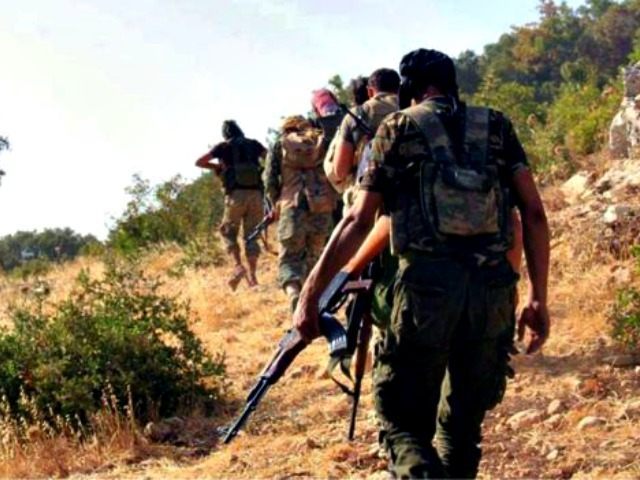The revamped Pentagon program to train so-called “moderate” Syrian rebels to combat the Islamic State (ISIS/ISIL) has produced less than 100 fighters since it was launched nearly six months ago, according to U.S. officials.
“U.S. military officials are considering ways to ramp up training of Syrian fighters against the Islamic State as the Pentagon moves cautiously forward with a revamped program to create an effective local ground force,” notes the Washington Post (WaPo).
Speaking on condition of anonymity, several U.S. officials briefed reporters about steps the Pentagon has taken since the Obama administration scrapped its initial $500-million train and equip program after it was deemed a failure in October 2015.
“After repeated setbacks to that program, which aimed to create an army of Syrian fighters from scratch, officials settled on a different approach, one that would train only small numbers of leaders or other key personnel from local units who could act as a liaison with U.S. and allied forces attacking the Islamic State from the air,” explains the Post.
Officials revealed fewer than 100 additional fighters, considered “spotters” rather than infantry troops, had been trained under the revised programs, most outside of Syria.
“What we’re looking at now is taking out key enabler personnel from certain units, training them and then reinserting them so they can provide information to the coalition to enable us to then target ISIL,” declared one official.
The number of trained fighters produced by the revamped program is “only a modest addition” to the 200 trained under the initial approach before it was ended, an effort that took months of work and millions of U.S. taxpayer dollars, points out WaPo.
“But officials said the relatively small numbers in the current program is not a reflection of renewed difficulties, but of a more targeted approach that is designed to assist existing units fighting the Islamic State,” it adds.
U.S. military officials are considering expanding the revamped training scheme.
“We’ve had a couple of trials and we’re going to look to continue to develop off of those,” the first unnamed official said.
According to WaPo, the U.S. officials highlighted recent victories in northern Syria by Kurdish and Arab forces, backed by U.S.-led coalition air power and guided by U.S. Special Operations troops on the ground.
There are nearly 300 Special Operations troops on the ground in Syria. The Pentagon has sought to keep their activities classified.
Some are overseeing friendly Syrian opposition forces fighting ISIS while others are primarily advising and equipping local forces.
Meanwhile, some U.S. troops continue to train Syrian “enabler” troops at facilities in Jordan and Turkey.
While testifying before the Senate Committee on Foreign Relations, Brett McGurk, President Barack Obama’s special envoy for the U.S.-led coalition against ISIS, indicated Tuesday that ISIS in Iraq and Syria is in retreat, in part due to the efforts by local forces.
He testified:
In July 2014, I testified before this committee as ISIL was expanding its territory, threatening Baghdad, and appeared unstoppable. The situation today is measurably different. ISIL has not launched a significant offensive in over a year; it is losing cities – Tikrit, Ramadi, Fallujah, Hit, Shadadi, and soon, Manbij – that were central to its rise; and the coalition backed forces arrayed against it are increasingly confident and on offense, with our support.
The Pentagon training program is separate from a CIA-led effort that has provided support to Syrian rebels combating forces loyal to Syrian dictator Bashar al-Assad.
A joint investigation by the New York Times (NYT) and Al Jazeera revealed this week that millions of dollars worth of weapons destined for those Syrian rebels have been stolen by Jordanian intelligence officials and sold on the black market.

COMMENTS
Please let us know if you're having issues with commenting.